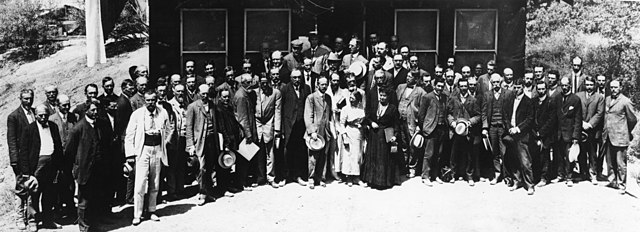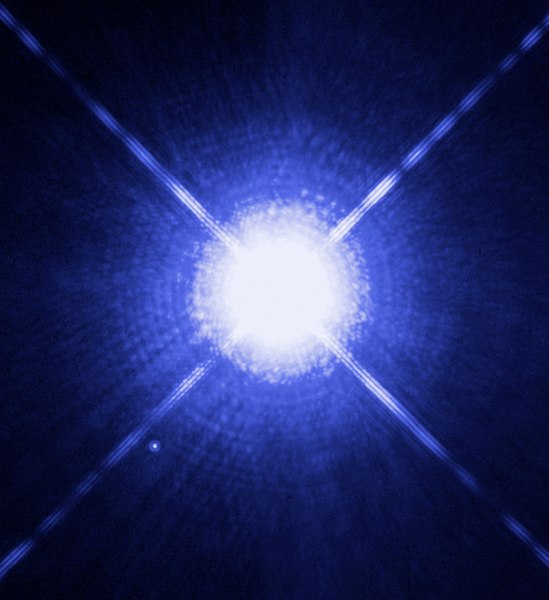Walter Sydney Adams was an American astronomer. He is renowned for his pioneering work in spectroscopy.
Walter Sydney Adams
Adams at the Fourth Conference International Union for Cooperation in Solar Research at Mount Wilson Observatory, 1910
Sirius is the brightest star in the night sky. Its name is derived from the Greek word Σείριος, meaning lit. 'glowing' or 'scorching'. The star is designated α Canis Majoris, Latinized to Alpha Canis Majoris, and abbreviated α CMa or Alpha CMa. With a visual apparent magnitude of −1.46, Sirius is almost twice as bright as Canopus, the next brightest star. Sirius is a binary star consisting of a main-sequence star of spectral type A0 or A1, termed Sirius A, and a faint white dwarf companion of spectral type DA2, termed Sirius B. The distance between the two varies between 8.2 and 31.5 astronomical units as they orbit every 50 years.
Hubble Space Telescope image of Sirius A and Sirius B. The white dwarf can be seen to the lower left. The diffraction spikes and concentric rings are instrumental effects.
Sirius (bottom) and the constellation Orion (right). The three brightest stars in this image—Sirius, Betelgeuse (top right) and Procyon (top left)—form the Winter Triangle. The bright star at top center is Alhena, which forms a cross-shaped asterism with the Winter Triangle.
A Chandra X-ray Observatory image of the Sirius star system, where the spike-like pattern is due to the support structure for the transmission grating. The bright source is Sirius B. Credit: NASA/SAO/CXC





